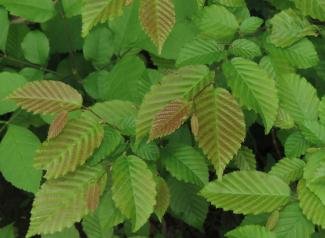
Habitat: Mesic upland forests, floodplain forests, alluvial swamps, tidal swamps, wet flatwoods, and stream banks. Common in the coastal Plain and piedmont; frequent in the mountains (at lower elevations).
Nice round shape, works as a specimen, or in a hedge or woodland edge. Good next to paths - drops its lower branches. Tolerates heavy shade.
Tolerates occasional flooding and short droughts. Does not tolerate compaction or salt.
Wildlife Value: It is a larval host plant for the Eastern Tiger Swallowtail and Red-spotted Purple butterflies. The seed and buds provide food source for songbirds, ruffed grouse, quail, wild turkeys, foxes, and squirrels. On young specimens, the inner bark is eaten by beavers and rabbits. These plants also provide good cover and shelter for animals.
Notes: slow growing and short lived
Earth Sangha Inventory
Founded in 1997, the Earth Sangha is a nonprofit public charity based in the Washington, DC, region. The Wild Plant Nursery is the most comprehensive source of local-ecotype, native plants in the Washington DC region, and the region’s only facility dedicated exclusively to this type of propagation. “Local-ecotype” plants are propagated from local, wild, naturally-occurring populations and are well-adapted to local conditions and for wildlife species that depend on the local forms, such as pollinators. Inventory is updated on a weekly basis so number may not be accurate.
| Pots Available | Plugs Available | Location | Notes | ||
|---|---|---|---|---|---|
| 91 | 0 | Row 18 | View My Wishlist |

